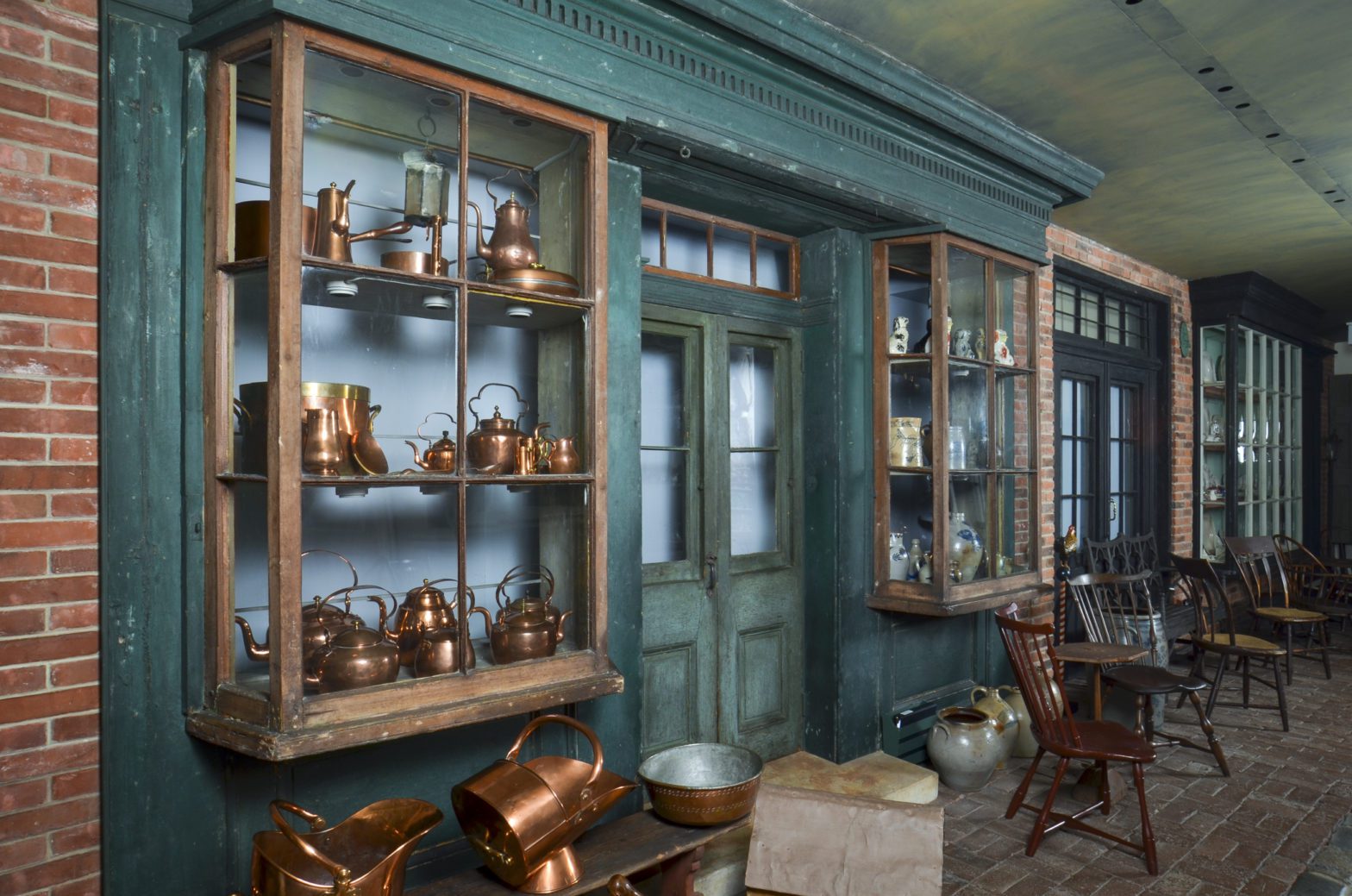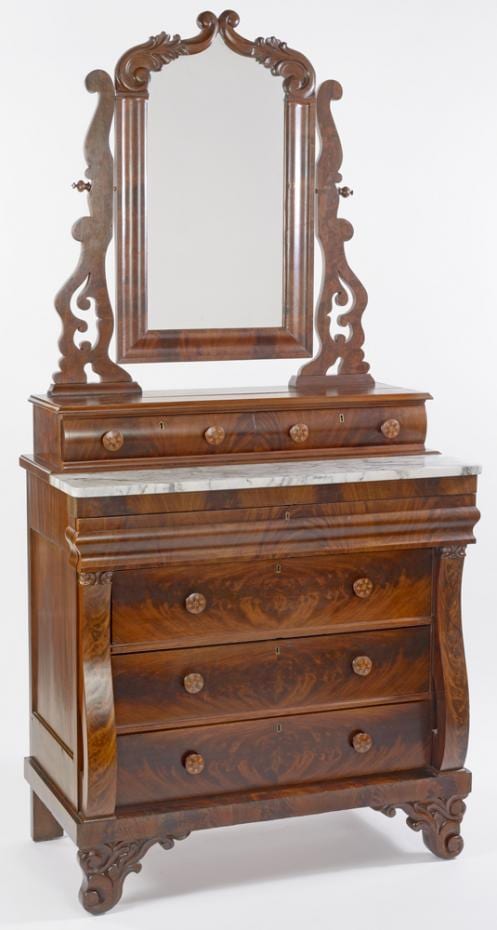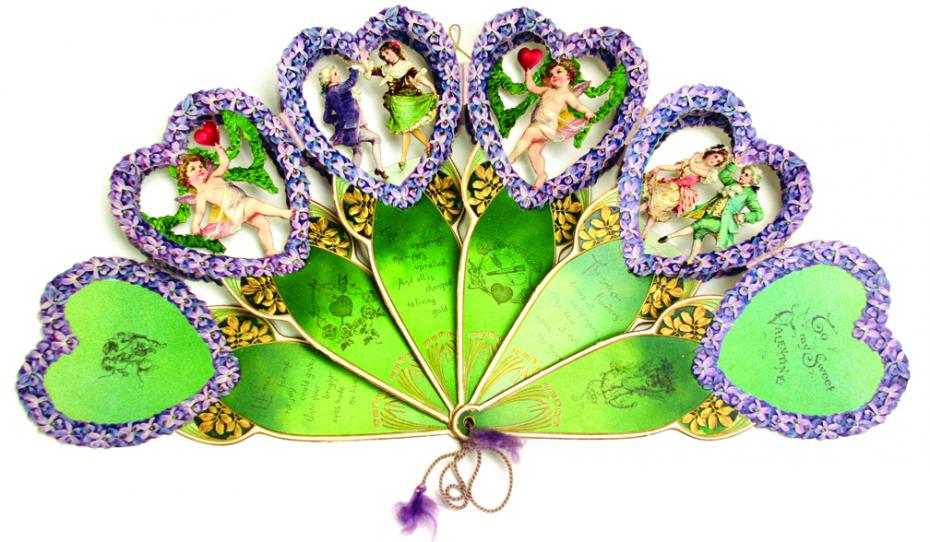Learn about lodging and dining options in the area.
360-degree Panoramic Virtual Tour
Explore dozens of Winterthur’s iconic rooms and acres of stunning Brandywine Valley landscape through Winterthur’s 360-degree panoramic virtual tour! Zoom in close to examine Winterthur’s unparalleled collection of American decorative arts and significant architectural elements, or take a wider view of the gorgeous landscape.
You are in control of the tour. Use your mouse, trackpad, or finger to move left or right and up and down.
Some of the rooms in the tour may not be currently open to the public, so the virtual tour gives you unparalleled access and convenience. Get a taste of what Winterthur has to offer and then book a visit to see it all in person!
Volunteer
Volunteer opportunities here
Truths of the Trade: Collecting, Researching, and Exhibiting an 18th-Century Atlantic World Cabinet
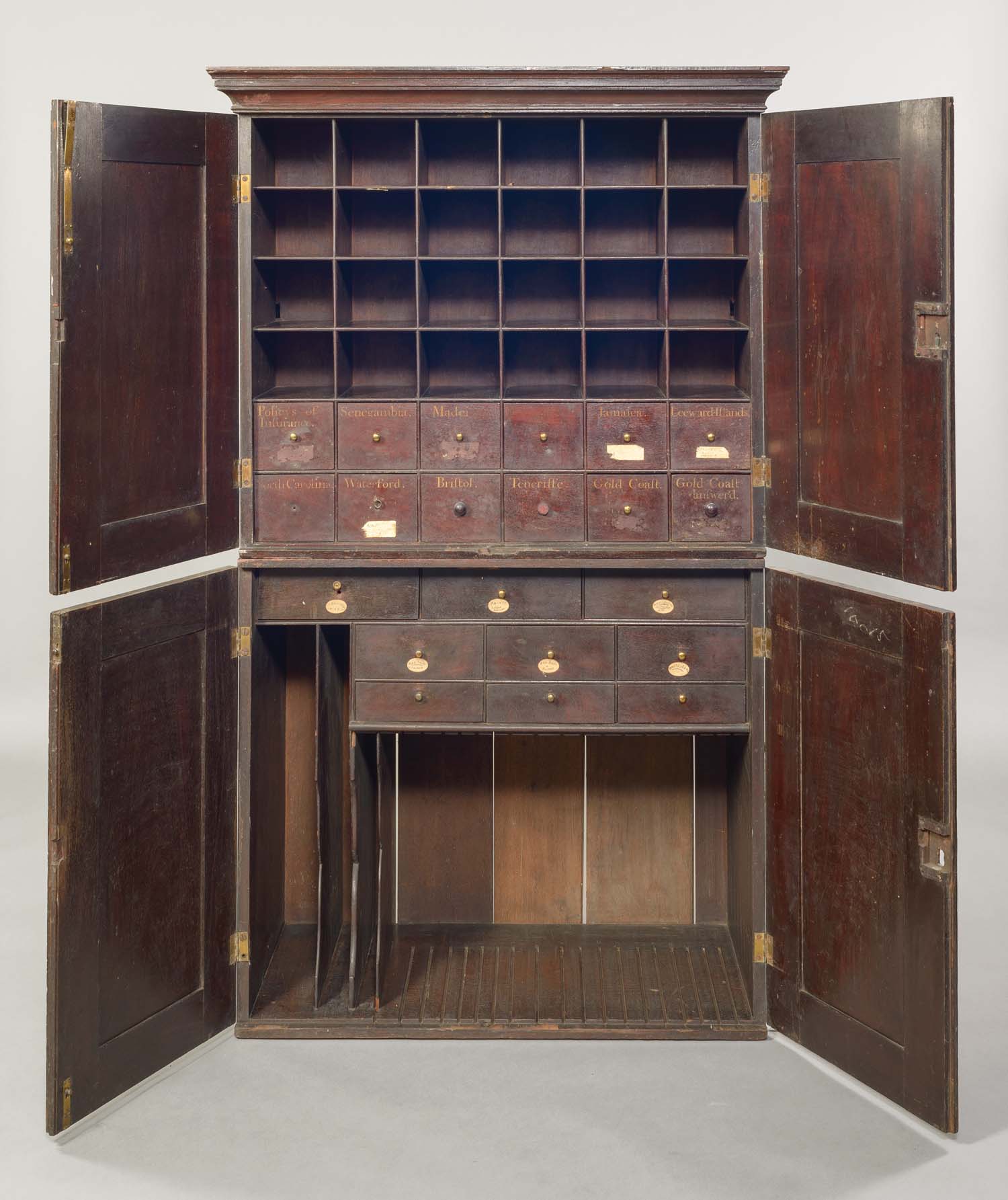
A mere shadow, faintly visible in raking light, is all that remains of the script that once spelled “Philadelphia” on the drawer front of a double cabinet. This drawer may be blank, but gold painted letters still adorn the cabinet’s eleven other drawers. Labeled to the left of Philadelphia is the name of the winemaking island of Madeira; to the right is Jamaica; “Teneriffe,” one of Spain’s seven Canary Islands, can be found painted on the drawer below; and names of other prominent 18th- and 19th-century ports and colonies fill out the mix. All taken into consideration, it became clear to Josh Lane, Winterthur’s curator of furniture, that the cabinet he was examining at the 2016 Delaware Antiques Show was a remarkable document of Atlantic world history. Purchased by Winterthur, the object offered a unique opportunity for study and soon became the focus of the first student-curated exhibition in the Society of Winterthur Fellows Gallery. Thanks to months of research by the students, aided by scholars across the country, the cabinet is now one of Winterthur’s primary references on the transatlantic slave trade.
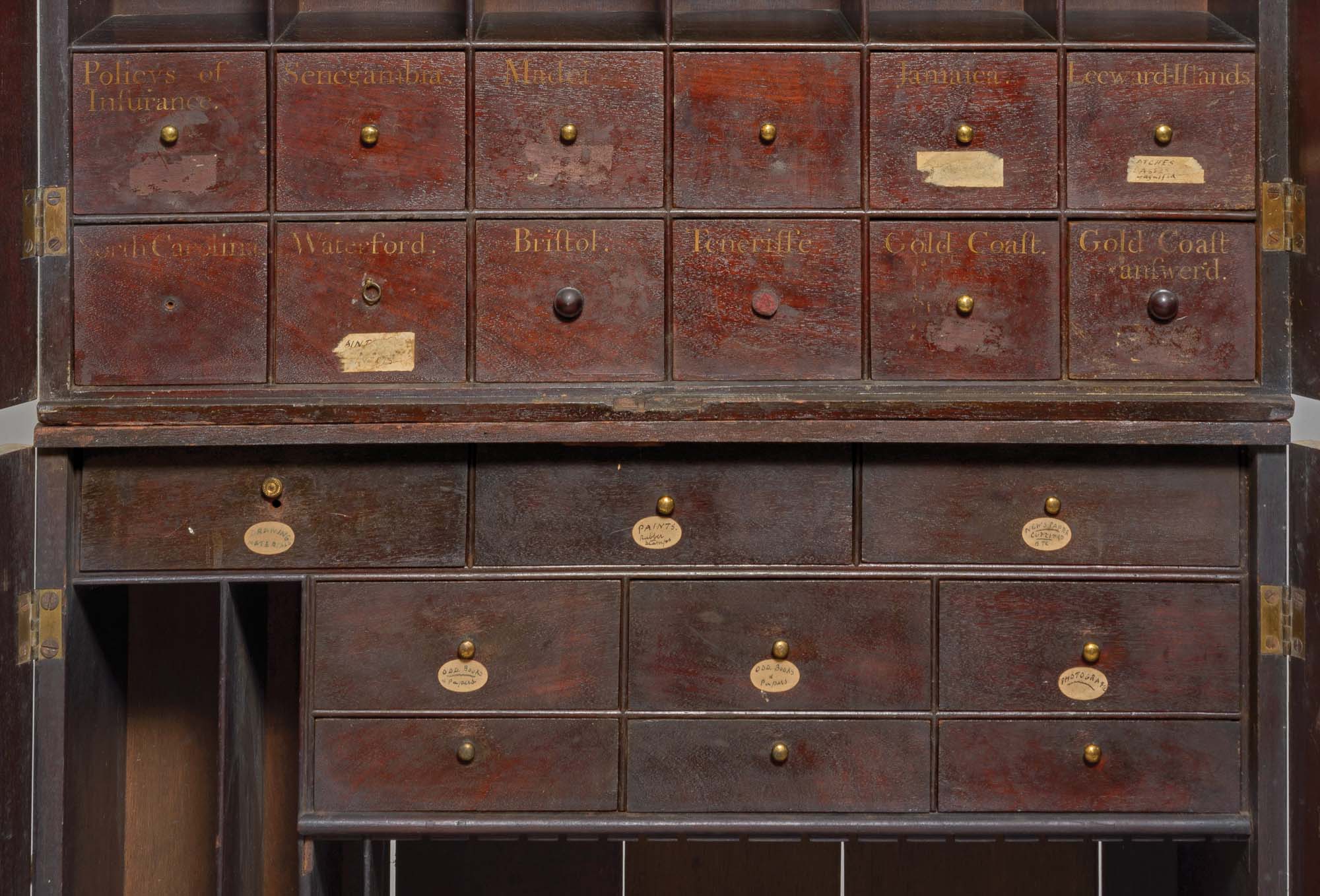
The use of island mahogany and English oak situate the piece in the world of Atlantic commerce, but its most compelling story is revealed when its locks are turned and doors are opened. Drawers labeled with the names of ports and colonies reconstruct networks of trade: Senegambia, Madeira, Jamaica, Leeward Islands, North Carolina, Waterford, Bristol, Teneriffe, Gold Coast, and Philadelphia, revealing participation in the transatlantic trade between Africa, the Caribbean, Europe, and North America that transported shiploads of commodities and captive people during the 18th and 19th centuries.
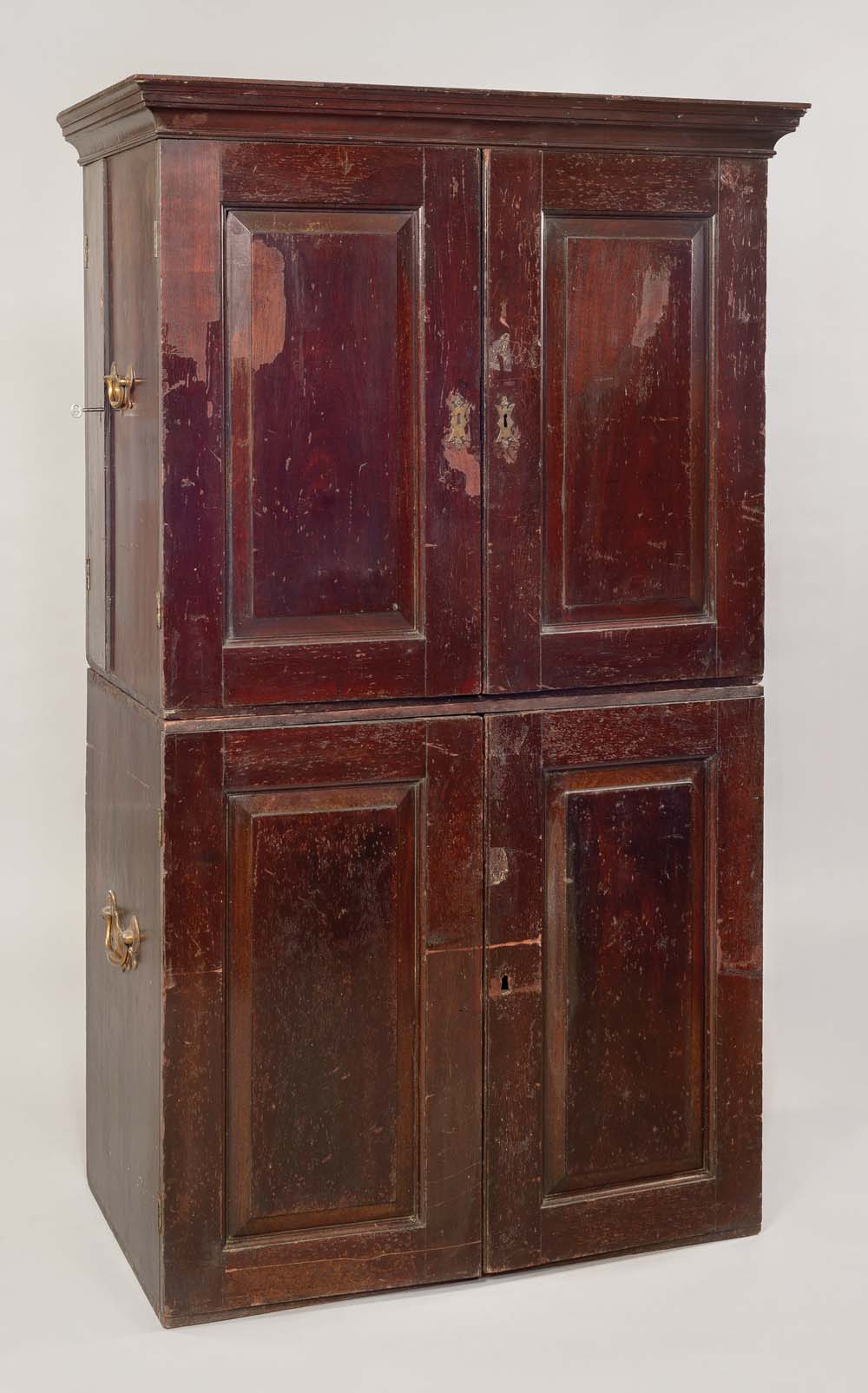
The Winterthur collection is deeply entangled in these trade networks. The commodities that crossed the Atlantic defined the material culture of early America―the very things Henry Francis du Pont and the museum collected. The Atlantic trade involved a wide variety of raw materials and refined goods, but slavery was its engine. Captive Africans and the products of their forced labor flowed into ports like those named on the double cabinet, making possible the luxury and beauty enjoyed by consumers in the past as well as visitors to the museum today. Through ports came sweet sugar and bitter suffering, beautiful mahogany and hideous brutality, gleaming gold and dark dehumanization.
The exterior of the double cabinet appears, at first glance, unassuming in its construction and design. Despite the modest appearance, the island mahogany used as the primary and secondary wood was an expensive material first harvested in the Caribbean as a profitable by-product of clearing land for sugar plantations. Cabinetmakers and consumers throughout the Atlantic world later revered the wood for its dark burgundy color and ease of use. Fitted to the mahogany doors of the cabinet are inset brass locks that served as extra security to protect the valuable insurance policies, shipping documents, and other records held within the drawers and shelves. In addition, the cabinetmaker built locking compartments into the sides of the cabinet for further safekeeping. Close examination also reveals fine attention to precise dovetail construction, suggesting investment of care and skill on par with other case pieces such as desk-and-bookcases and escritoires.
It is possible that the name of the original owner, maker, and origin of the cabinet will never be uncovered. What is known, however, is that the size of the storage receptacles and the labels with geographic locations and letters of the alphabet indicate that the piece functioned as a filing cabinet. The owner would have arranged paperwork dealing with each Atlantic world location in order to organize his business interests. The duplicate mention of “Gold Coast” on two of the drawers offers the best evidence of the cabinet’s use as an organizational tool. The Gold Coast, an area of Africa in what is now Ghana, was an active site of the slave trade in the 18th century. The labels “Gold Coast” and “Gold Coast Answered” suggest that the owner had enough correspondence from this region to fill two compartments and perhaps conducted more business there than in any of the other port or colony represented.
In addition to indicating geographic locations, the top drawer of the cabinet, furthest to the left, is labeled “Policys of Insurance.” Filed away were undoubtedly insurance policies penned in ink on sheets of handmade paper. Winterthur’s manuscript collection holds several such examples issued to 18th- and 19th-century merchants to protect ships and cargo with significant monetary value. Like insurance today, these policies covered loss or damage to capital. Because their cargo often included enslaved humans, merchants involved in the Atlantic trade obscured the language in these documents to ensure full protection.
Rather than displaying such an insurance policy next to the double cabinet in the exhibition Truths of the Trade: Slavery and the Winterthur Collection, the student curators chose a shipping receipt attributed to prominent Newport, Rhode Island, merchants Aaron Lopez and Jacob R. Rivera. The receipt would have fit into the cabinet drawers, but the desire to include the document originated from a graduate student’s ongoing research into Lopez and his transatlantic ventures. In fact, several of the decisions made by the students were shaped by not only their own research but that of others as well. The curators featured a telescope in the exhibition after hearing Dr. Louis Nelson speak about the dual use of the instrument for both navigation on ships and surveillance of enslaved labor by owners on Jamaica plantations. A presentation by Winterthur graduate Sarah Parks prompted the students’ choice of an 18th-century letter book containing textile samples described as being “a good style for the coast of Africa.” That letter book was the focus of Sarah’s thesis. Martha Washington’s cake plate, a particularly iconic object in the exhibition, was chosen after learning about the large amounts of sugar imported by the Washington family―information acquired during a gallery walk with the curators, research historians, and archaeologists who made possible Mount Vernon’s exhibition Lives Bound Together: Slavery at George Washington’s Mount Vernon. Scholars from far and near helped the Winterthur student curators stitch together the story of the double cabinet by surrounding the piece with objects that complemented its “unknowns.”
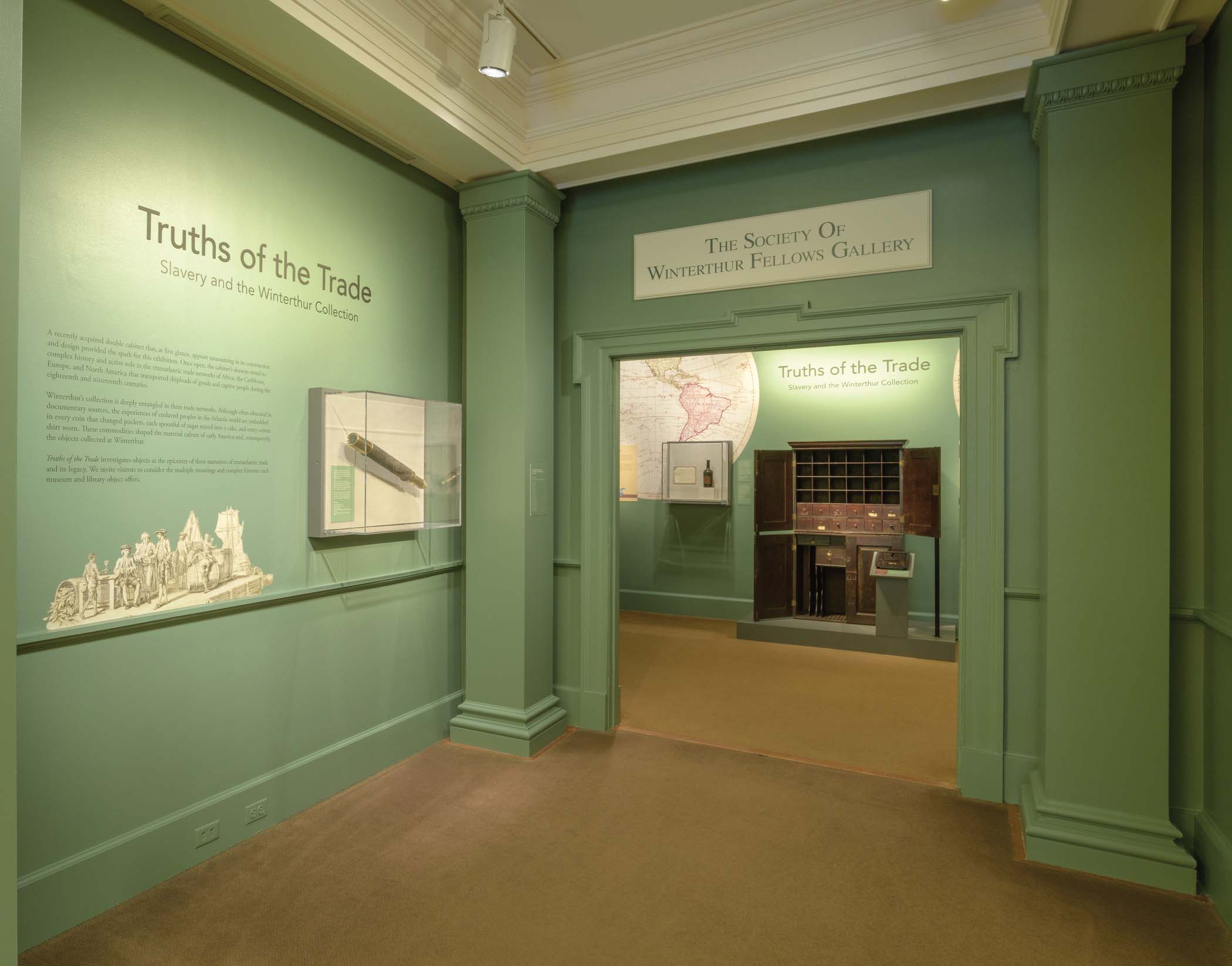
Students and staff at Winterthur continually revisit the collection to ask new questions and reinterpret the histories of objects. Truths of the Trade was one such project. It permitted graduate students from the Winterthur Program in American Material Culture and the University of Delaware Department of Art History to consider how changing cultural and institutional perceptions of race continue to influence the acquisition of objects for the museum―all through the study of an unimposing double cabinet with a remarkable story to tell.
Post by J. Lara and Alexandra Rosenberg are Lois F. McNeil Fellows in the Winterthur Program in American Material Culture.
Collecting for the Future: Recent Additions to the Winterthur Collection
This exhibition features an eclectic selection of recent additions to the collection, examined through the lenses of four museum collecting policies that motivated the acquisition of these items. “Tools for Teaching” features diverse items that aid Winterthur educational mission. “The Stuff of Global Life” examines objects forged through global exchange. “Representing America’s Diversity” highlights objects made by free African Americans. “Reinvention and Reuse” investigates the layered history of “altered” objects. As you explore the exhibition, you will encounter fascinating objects that reshape our understanding of American history. Each one is a welcome addition to the Winterthur collection.
At-Home Activities for Grades 3–5
Hand fans in the John and Carolyn Grossman Collection
The John and Carolyn Grossman Collection contains about 250,000 items that document chromolithography, a process of printing in colors that was developed in Europe during the early 1800s and arrived in America in 1840. As the 19th century progressed, chromolithographic illustrations could be found on such items as postcards, greeting cards, calendars, labels, trade cards, posters, books, children’s games, decorative prints, and numerous other items, including hand fans, objects especially prized by Carolyn Grossman.
The hand fans in the Grossman Collection date from the 1890s to about 1915, years that are the high-water mark for chromolithographic work. They can be grouped into seven categories: valentines, calendars, advertisements, nature, pets, children, and holidays. Of course, sometimes a fan transcends a single category, such as a Christmas fan that shows a calendar and holly.
The hand fans in the Grossman Collection, like many elsewhere, are largely by unknown individuals. Enough exceptions exist, however, to indicate that accomplished artists, writers, and publishers were involved in creating them. Artists include Ellen Clapsaddle (1865-1934) and Frances Brundage (1854-1937); writers include Marguerite Radcliffe, Alice Reed, H. M. Burnside, and Eliza Cook (1818-1889); and publishers include the International Art Publishing Co., Ernest Nister, E. P. Dutton & Co., Raphael Tuck & Sons, the American Lithographic Co., and Promis & Co. Much of the printing was done in Germany, where chromolithography was practiced so well.
Most, if not all, of the hand fans in the Grossman Collection were produced by women, and the fans demonstrate a high level of beauty and creativity. Their intricate designs are some of the finest examples of their kind. Students of Victorian imagery will note that images on fans also appear on other items. For instance, the young girl to the far right in “To my Sweetheart,” a fan illustrated by Frances Brundage (No. 10), also shows up on a trade card for Glenwood Ranges.
Activities for middle schoolers
At-Home Activities for Grades K–2
Fellows Spotlights

Elaine K. Ng
Multidisciplinary artist Elaine K. Ng returned to Winterthur this summer to complete her Maker-Creator Fellowship interrupted in 2020 by the onset of the pandemic. Ng’s practice uses material investigation, writing, and research to examine our relationships to place. Her work explores the physical and psychological structures of site, microhistories carried through objects, and meanings imbued in material and pattern.
While at Winterthur, Ng furthered her project “But Where Are You Really From? An Ecological Fingerprint of Place” that considers the ecology of natural and built environments as evolving repositories of information that contribute to the complex identify of a place. Ng collected a variety of plant specimens from our grounds through consultation with members of the institution’s garden staff, then utilized wet lab space in our paintings conservation lab for the duration of her two-week fellowship to create pigment extractions, or “fingerprints of place” from these specimens that will be used in the upcoming installation.
Ng holds an MFA from the Cranbrook Academy of Art and has been a Fulbright Fellow for research in Taiwan. Her guest artist residencies include the Djerassi Program and, most recently, at the Corning Museum of Glass.
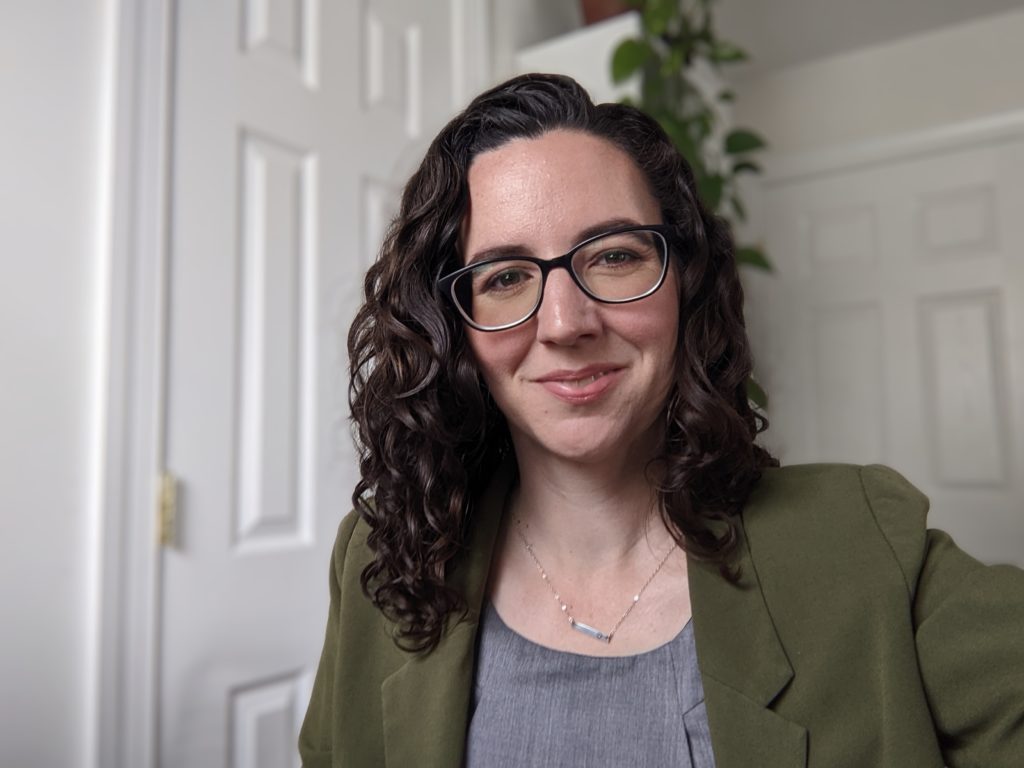
Short-Term Research Fellow, 2022-23. Photo courtesy of Carla Cevasco.
Dr. Carla Cevasco
Dr. Carla Cevasco is in residence at Winterthur this summer as she conducts research for her second, book-length project, Feeding Children in Early America, an outgrowth of her recently published book, Violent Appetites: Hunger in the Early Northeast (Yale University Press, 2022).
This new project investigates the feeding of children, as prescribed and practiced, across various cultures in early America from the 17th to 19th centuries. Dr. Cevasco’s research reveals that the peoples of the newly independent United States cultivated a national cuisine idealized in the image of a white, middle-class mother feeding her child. That was not, however, the reality of how most children ate in early America. The array of people who participated in the feeding of children was much wider: enslaved and free domestic workers, institutions like foundling hospitals or orphanages, and residential schools. Dr. Cevasco hopes to shed light on what nutrition looked like for early American children and examine how it impacted the construction of gender and race.
At Winterthur, Cevasco is conducting research for the third chapter of her book, which investigates the idealized domestic sphere in the mid-19th century. Winterthur Library’s extensive catalog of recipe books, parenting guides, etiquette guides, domestic manuals, and medical texts will help her to understand the period’s ideals. The museum’s collection—including an array of baby bottles, pap boats, children’s dishes, nursing implements, and maternity clothing—will provide insight into the realities of child feeding, which may or may not stray from such ideals.
Dr. Cevasco completed her master’s degree in American history and PhD in American studies at Harvard University.

